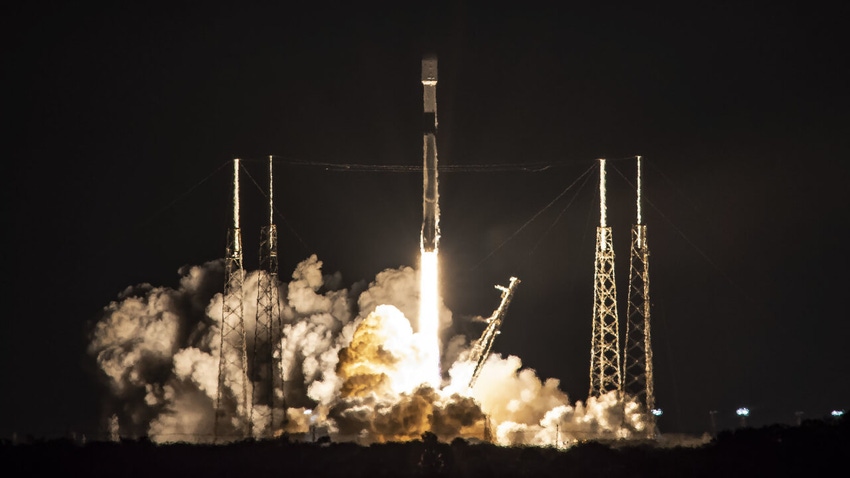SpaceX, T-Mobile defend phone-to-satellite plans
'SpaceX's modification of its second-generation [satellite] system to enable supplemental coverage from space would serve the public interest,' company officials told the FCC.

In a new filing with the FCC, T-Mobile and SpaceX provided some more details about how they plan to connect T-Mobile's customers to SpaceX's satellites. The move is noteworthy considering the companies are facing static from the likes of Omnispace, AT&T and Dish Network.
"SpaceX's modification of its second-generation [satellite] system to enable supplemental coverage from space would serve the public interest and advance the commission's ambitious space agenda," the companies told several top FCC officials in a meeting last week, according to their recent filing. They urged regulators to approve plans by SpaceX to launch new satellites that would be able to send and receive communications from T-Mobile phones using the operator's PCS G Block spectrum.
"SpaceX and T-Mobile agreed to technical limits for satellite operations that will protect T-Mobile's in-band PCS G Block terrestrial operations. SpaceX and T-Mobile will continue to coordinate to enable efficient use of PCS spectrum in the public interest," the companies told the FCC.
Connecting phones to satellites
At issue are concerns raised in part by Omnispace that Supplemental Coverage from Space (SCS) communications between T-Mobile customers and SpaceX satellites would cause interference to nearby operations, potentially including Omnispace's operations. Importantly, Omnispace is hoping to offer its own such phone-to-satellite services via its own spectrum holdings, and therefore could benefit from any delays to T-Mobile's efforts with SpaceX.
"SpaceX's SCS operations will not cause interference to out-of-band satellite operations," SpaceX officials told the FCC last week. The company added it would continue to work with the National Science Foundation (NSF), the National Radio Astronomy Observatory (NRAO) and others to ensure its plans won't affect existing or planned operations.
AT&T and Dish have raised concerns about the T-Mobile and SpaceX efforts. AT&T, for example, argued earlier this year that T-Mobile and SpaceX haven't sufficiently provided the details necessary to convince regulators to allow them to move forward with their phone-to-satellite plans. AT&T, for its part, is pursuing almost exactly the same service via its own partnership with satellite operator AST SpaceMobile.
Interestingly, Globalstar and Iridium recently filed comments into the FCC's proceeding involving T-Mobile and SpaceX. The companies didn't directly offer an opinion on the topic, but argued that they both are pursuing similar offerings using their own satellite spectrum holdings.
A service by many names
AT&T, T-Mobile, Iridium and others are chasing the "direct to device" (D2D) opportunity. (In FCC filings regarding the use of terrestrial spectrum for such services, players are now using the new SCS, supplemental coverage from space, initialism.)
Whatever the initialism, the technology promises to connect regular smartphones with satellites in a move that would essentially eliminate cellular dead zones. Initial services will likely support only emergency text messages, but future services – those relying on more and bigger satellites – could potentially support more services ranging from voice calling to high-speed video. The ramifications of such services are significant, considering they could reduce or eliminate the need for cell towers in rural areas.
Apple first proved out the D2D space with its new iPhone 14, which can connect to Globalstar satellites. That service uses specialized chipsets and Globalstar's satellite spectrum. SpaceX, AST SpaceMobile and Lynk Global – which don't have that kind of spectrum – are hoping to bypass that problem by using mobile operators' terrestrial spectrum holdings for D2D services.
But that would require regulators at the FCC to sign off on the use of terrestrial spectrum for satellite-based services. That's not necessarily a straightforward proposition because satellite-based connections could interfere with nearby terrestrial connections.
Related posts:
— Mike Dano, Editorial Director, 5G & Mobile Strategies, Light Reading | @mikeddano
About the Author(s)
You May Also Like












